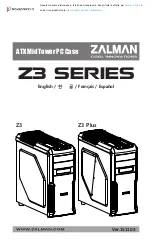
10
Questions and Answers
1. What if all the PCIe slots within the host computer are occupied?
Remove one of the third-party PCIe cards, and replace the third-party card with host card
within the host computer, and then install the removed third-party PCIe card into
NA333A-G3 storage enclosure.
2. As moving a third-party PCIe card from host computer to NA333A-G3,
will the third-party PCIe card work well and how to install third-party
PCIe card’s driver?
Yes, the third-party PCIe card will work well in NA333A-G3 just like it is in the host computer.
And the installation procedure for the third-party PCIe card’s driver is the same.
3. NA333A-G3 supports SGPIO; what does it mean?
NA333A-G3 chassis supports SGPIO. When any HDD fails, the red LED indicator on the tray
will light. The SGPIO function will be effective when the SAS/SATA RAID card supports SGPIO
function. (for example: Areca’s RAID card)
4. How do I know the RAID card and the third-party PCIe cards installed
within NA333A-G3 are recognized by the host computer?
Go to Windows’ Device Manager, click “View” at the top menu bar, and select “Devices by
connection”. Then go to
ACPI x64-based PC
>>
Microsoft ACPI-Compliant System
>>
PCI Express Root Complex
. Open the PCI Express Root Port, and then you will find the
RAID card and the third-party PCIe cards in Netstor unit being shown and being
recognized by computer under the PCI Express Root Port.





























